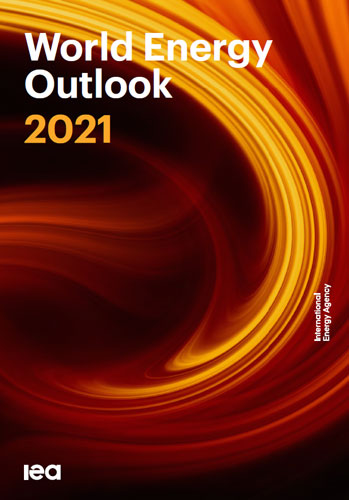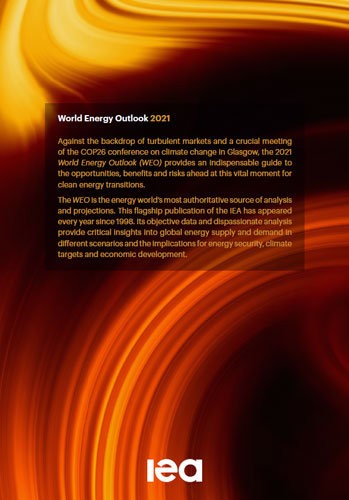World Energy Outlook 2021/Перспективы мировой энергетики 2021
Издание на русском языке
In 2020, even while economies bent under the weight of Covid-19 lockdowns, renewable sources of energy such as wind and solar PV continued to grow rapidly, and electric vehicles set new sales records. The new energy economy will be more electrified, efficient, interconnected and clean. Its emergence is the product of a virtuous circle of policy action and technology innovation, and its momentum is now sustained by lower costs. In most markets, solar PV or wind now represents the cheapest available source of new electricity generation. Clean energy technology is becoming a major new area for investment and employment – and a dynamic arena for international collaboration and competition.
Table of Contents
Foreword
Acknowledgements
Executive summary
Introduction
1 Overview
Introduction
1.1 A new energy economy is emerging
1.2 Scenario trajectories and temperature outcomes
1.3 Keeping the door to 1.5 °C open
1.4 Energy consumers of tomorrow
1.5 Mobilising investment and finance
1.6 People-centred transitions
1.7 Phasing out coal
1.8 Prices and affordability
1.9 Energy security and the risk of disorderly change
1.10 Fuels: old and new
2 State of play
2.1 Introduction
2.2 Energy and the Covid-19 pandemic
2.2.1 Economy and public health
2.2.2 Recovery spending and energy investment
2.2.3 Energy demand and supply
2.2.4 Emissions
2.3 Where do we go from here?
2.3.1 Climate pledges
2.3.2 WEO-2021 scenarios
2.4 Inputs to the scenarios
2.4.1 Economic and population assumptions
2.4.2 Energy prices
2.4.3 Carbon prices
2.4.4 Technology innovation, deployment and costs
3 The ambition gap to 1.5 °C
3.1 Introduction
3.2 Achieving net zero emissions by 2050
3.3 Moving from announced pledges to achieve net zero emissions by 2050
3.4 Electricity sector
3.5 End-use sectors
3.5.1 Industry
3.5.2 Transport
3.5.3 Buildings
3.6 Methane emissions from fossil fuel operations
3.7 Behavioural change
3.7.1 Role of behavioural change and materials efficiency
3.7.2 Behavioural changes in advanced economies and emerging market and developing economies
3.8 Announced pledges and air pollution
4 Exploring multiple futures: demand and electricity 165
4.1 Introduction
4.2 Implementation gap
4.2.1 CO2 emissions
4.2.2 Energy access
4.3 Energy demand
4.3.1 Energy demand trends to 2030
4.3.2 Energy demand trends after 2030
4.4 Transitions in final energy consumption
4.4.1 Energy efficiency improvements
4.4.2 Electrification
4.5 Electricity
4.5.1 Electricity demand
4.5.2 Electricity supply
4.5.3 Electricity system flexibility
4.5.4 Networks
5 Exploring multiple futures: fuels
5.1 Introduction
5.2 Liquid fuels
5.2.1 Oil trends to 2030
5.2.2 Oil trends after 2030
5.2.3 Biofuels and hydrogen-based fuels
5.3 Gaseous fuels
5.3.1 Natural gas trends to 2030
5.3.2 Natural gas trends after 2030
5.3.3 Low-carbon hydrogen and biogas
5.4 Solid fuels
5.4.1 Coal trends to 2030
5.4.2 Coal trends after 2030
5.4.3 Solid bioenergy
6 Secure transitions
6.1 Introduction
6.2 Energy security in increasingly integrated systems
6.2.1 Electricity security
6.2.2 New demands on fuel infrastructure
6.2.3 Additional energy conversions
6.2.4 Building climate resilient infrastructure
6.3 International aspects of energy security
6.3.1 Critical minerals
6.3.2 Oil and gas investment
6.3.3 New patterns of energy trade
Annexes
Annex A. Tables for scenario projections
Annex B. Design of the scenarios
Annex C. Definitions
Annex D. References
Annex E. Inputs to the World Energy Model




